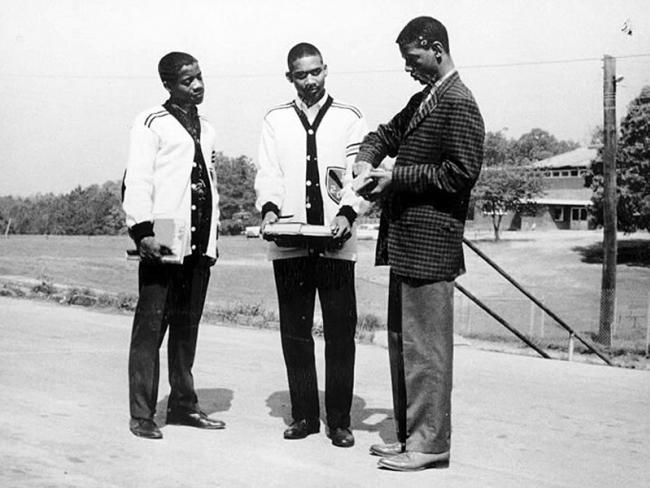Higher Education
Similar to the pressure that the National Association for the Advancement of Colored People (NAACP) placed on the Atlanta Public School System to integrate, the NAACP also pressured universities across Georgia to integrate by suing these institutions for discriminatory admissions requirements. According to the Georgia Encyclopedia, higher education institutions in Georgia would place barriers such as only offering out-of-state tuition to in-state African American students. Unattainable admissions requirements at Georgia State University for African American applicants included submitting multiple letters of recommendation from alumni in a society that had nearly no racial overlap. This led Barbara Hunt with two other students and the NAACP to file a lawsuit against GSU (Hatfield).
In an article from GSU Magazine, Barbara Hunt’s fight for integration is recounted. Hunt was a well-qualified applicant who had worked as Dr. Martin Luther King Jr.’s secretary at the Southern Christian Leadership Conference. Her lawsuit was eventually accepted, and the court ruled that the admissions requirements made by GSU were unlawful. Though Hunt ended up going to school in Texas, this lawsuit paved the way for integration in higher education (Babiarz).
Likewise, Hamilton Holmes and Charlayne Hunter successfully won their lawsuit against the University of Georgia making UGA the first higher education institution in Georgia to integrate. The integration resulted in a violent riot outside Myers Hall, but faculty members did not tolerate the disruptive, racist behavior, and Holmes and Hunter were allowed to continue their studies (Hatfield).
Through careful planning and consideration, Georgia Tech was the first university to integrate without legal pressure. Emory University intended on integrating peacefully; however, state legislature threatened to remove the tax-exempt status of any school that integrated. When a well-qualified applicant applied to Emory, the university filed a suit against the state legislature which resulted in the admission of the first African American student at Emory and keeping their tax-exempt status (Hatfield).
Works Cited
Babiarz, Liz. “Quiet Courage.” GSU Magazine, 2009, http://www2.gsu.edu/~wwwork/magazine/2009fall/quiet_courage.html.
Hatfield, Edward A., “Desegregation of Higher Education.” Georgia Encyclopedia, 28 May 2008.

